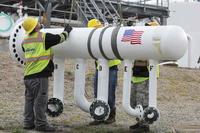As an Amazon Associate, Military.com earns from qualifying purchases.
Unless you've purchased a home, your car is the most expensive thing you own. Permanent change of station (PCS) moves and temporary duty assignments can really rack up the miles. Work leaves little time to take your car to the mechanic without burning a day of leave. All too often, this results in service members' cars falling into a state of disrepair. One solution is to beat the trend with preventative maintenance and at-home repairs that save you lots of money in the long run.
Most military bases have an auto skills center where you can work on your car for just a few dollars. They generally have lifts, specialty equipment, covered parking spaces and places to discard dirty oil and coolant properly. These hobby shops also have tools you can borrow, but it's easier if you have your own and don't have to wait for someone to be done with the one you need.
But which tools are worth buying? I've been wrenching on my own truck, cars and motorcycles since I got my license, and these are the tools I consider to offer the best bang for the buck. Spending a few hundred dollars now can save you thousands in repairs and allow you to get years of life out of your privately owned vehicle (POV) before you have to evade predatory dealerships to replace it.
Lug Wrench
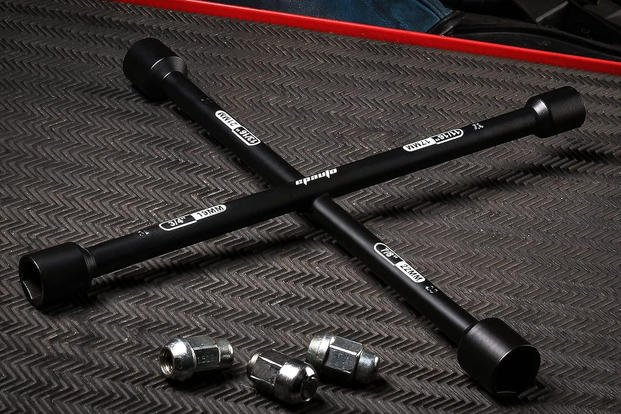
This is the first tool I recommend to most drivers. Every car comes with some kind of wrench to remove the lug nuts or lug bolts that hold your wheels on, and they're usually terrible. Don't stick yourself with a helpless little wrench when you're stranded on the side of the road with a flat.
A cross-shaped lug wrench offers way more leverage. That's important because whoever installed your wheels last almost certainly used compressed-air tools to put the lug nuts on. That force, combined with natural corrosion, can make the job of changing a tire impossible with a factory roadside repair kit.
I've used lug wrenches like this to break incredibly stubborn lug nuts free. Sit on the ground, pull with both hands and push with a foot on the opposing end of the wrench. That method will get just about any wheel free.
Mechanics Tool Set
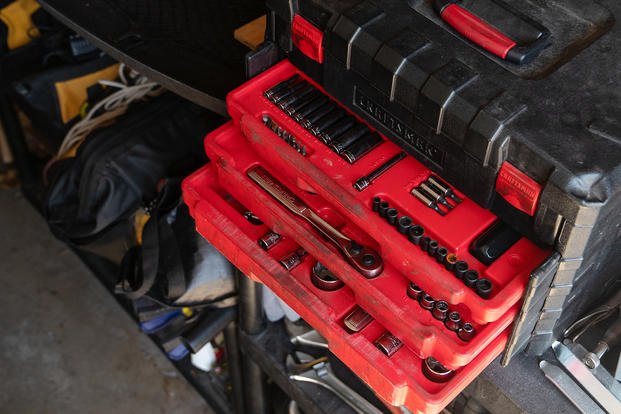
Take a look under the hood or inside the wheel wells of your car. Nearly every single component is held together with bolts. With a few sockets and adequate leverage, you can almost strip a car down to individual pieces.
The best auto repair tool you can possibly invest in is a decent collection of wrenches, ratchets and sockets. This Craftsman mechanics tool set, which I own and frequently recommend, has everything you need to complete the majority of at-home automotive projects. It's got ratchets in three different drive sizes. There are combination wrenches, hex-drive bits, and standard and metric sockets (six- and 12-sided) -- including deep-well sockets and a dedicated socket for removing and installing spark plugs without breaking the porcelain insulators.
I've waxed poetic about this tool set before, and for good reason. It's by far the most useful thing in my garage. Replacing brake pads? Piece of cake. Changing oil and spark plugs? No sweat. Tearing down an old V8 to the bare block? Yep, these were the tools that got my truck's engine from the motor mounts to an engine stand and back again. They've had my back for years, and they'll do the same for you.
Jack Stands

Sooner or later, you're going to encounter a job that requires you to work underneath your car. Maybe it's a simple brake job, or maybe you have to slide all the way under to change your oil or differential fluid.
If you own a truck or SUV, some of these jobs are easy because the vehicle is already high enough off the ground to work on. Other times, you'll need to lift your car. When that happens, do not trust your life to a jack.
Always lower your car onto sturdy jack stands rated for your car's weight (remember that each stand only has to support a quarter of the weight) before getting started. Instead of relying on hydraulic pressure, jack stands use solid metal to hold your vehicle in the air. Since a jack stand will be the only thing preventing your car from squishing you like a hydraulic press, don't bother with cheap jack stands that are known to fail under load.
Torque Wrench
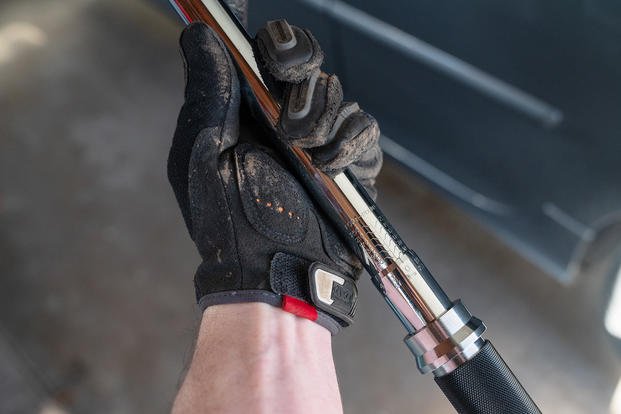
There are times when tightening bolts until they feel snug is good enough. If you're going to work on components such as your brakes, suspension or drivetrain, though, you need to be sure that you're getting each fastener tightened to spec. Too loose, and you run the risk of causing the part to fail while you're driving. Too tight, and you can strip threads and end up worse off than when you started.
The only way to know you've done the job properly is to use a torque wrench. These tools come marked in increments of inch-pounds (suitable for more delicate projects involving soft metals or plastic) and foot-pounds (adequate for big jobs, such as tightening lug nuts and head bolts). For most automotive jobs, a larger torque wrench that goes up to 120 foot-pounds or so will do the trick.
These are more sensitive than other tools, and it's a good idea to have your torque wrench calibrated every so often. They come in cases for a reason, and that's where you should store them. Don't drop your torque wrench or use it for anything other than tightening nuts and bolts.
Trim Tools
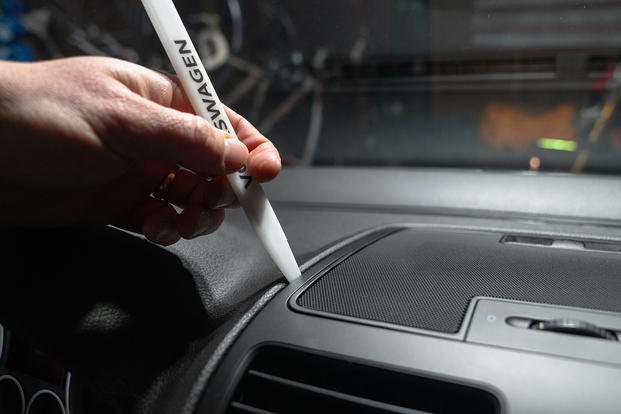
Cracked and peeling interior trim pieces don't affect the way your car performs, but they sure make it a less pleasant place to be. Replacing them is one of the easiest ways to make your old POV feel new again.
The trouble with this kind of repair is getting the old trim pieces out of your car in the first place. Take a look at your dash, door panel or center control panel; there are no fasteners to be seen. That means there are little plastic clips on the underside that need to be popped free.
Instead of jamming a flathead screwdriver into your car like a crazed Halloween movie villain, pick up a set of trim tools (sometimes these are called bone tools). Plastic pry bars and picks are gentler on fragile components and won't beat up surrounding trim pieces.
I've also used tools such as this on external components. Mine worked great when I needed to pop apart a side rearview mirror assembly to replace a broken turn signal -- no scratched paint, no broken pieces, just a job well done.
Headlight Restoration Kit

If you're like most service members, you probably want to squeeze every mile you can out of your current daily driver. If you're nursing along an older vehicle, you probably have dry, yellow headlights that are about as effective as a pair of glow sticks taped to your bumper.
Restoring old headlights is one of the biggest improvements you can make to your car's appearance. I've used this Griot's Garage kit with great results. It's an easy DIY project that only takes a few minutes, and it costs a lot less than replacing your entire headlight assemblies.
The kit is fantastic, but there is room for user error so be careful and take your time. Be thorough when you're sanding the plastic. Don't get carried away with the ceramic coating; I used a little too much, and even though it looks great, the surface is rougher to the touch than I'd like.
You'll be surprised how much this can improve your car's appearance. For $30, it's one of the most cost-effective ways to make your car safer to drive and more enjoyable to look at. Even if you plan on selling your ride soon, this can create a nice bump in curb appeal.
Gloves
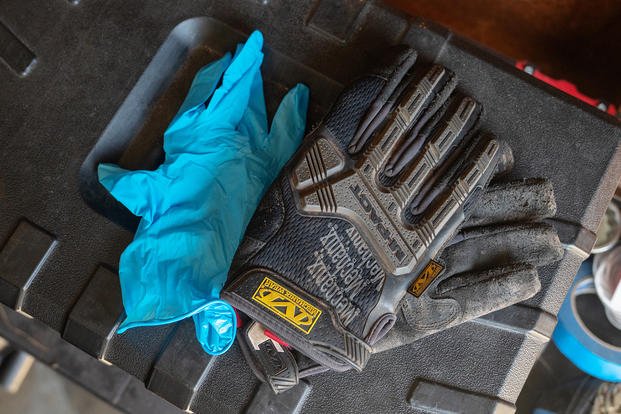
Finally, pick up some gloves to protect your hands while you're doing all these repairs. They aren't necessary, but I've split enough knuckles open and scrubbed my hands raw removing grease enough times to determine that there's nothing wimpy about protecting your hands.
A set of Mechanix gloves is perfect for tough jobs. If you're breaking rusty bolts free or handling sharp or hot components, you'll want something robust. I prefer gloves with rubber impact protection on the backside of the hand. These cost about $25, but they'll last a long time and save your hands from all kinds of injuries.
If a repair doesn't warrant something that heavy duty, skip the lightweight work gloves and go straight to medical-style rubber gloves. Some, such as these from TitanFlex, are extra thick and come with a grippy texture for use in the garage rather than the doctor's office. Stay away from black rubber gloves; almost all of the fluids you'll be working with are black or dark brown, and a contrasting color will help you feel around with your fingers and check them to detect leaks.
I recommend keeping one set of gloves with your tools and another in your car. That way, if you need to make a quick repair, you don't have to worry about spreading grease all over your interior or ruining a set of cammies by wiping your hands on them.
Remember that Mechanics Exist for a Reason
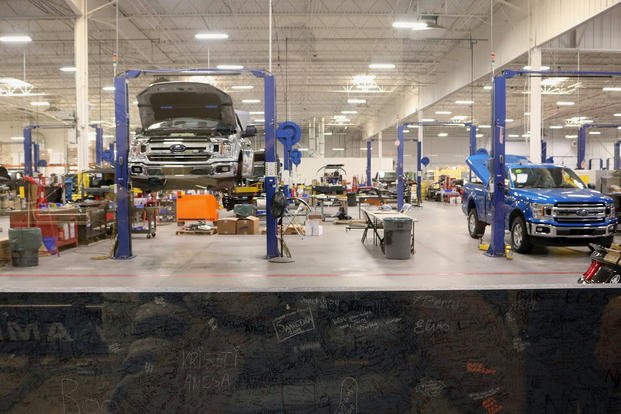
Fixing your own car is incredibly empowering, and there are times when it's a lot of fun. Some of my favorite memories took place in a garage or bay of MCAS Miramar's Auto Skills Shop.
That said, there are times when it's best to call a professional. Make sure you understand each step of a project and have the tools, time and skills to tackle it before you start. One wrong move or over-tightened bolt can end up costing more than you would have paid to hire a repair shop in the first place.
If you buy some of these auto repair tools, start small. Build confidence with easy jobs. Enlist the help of a knowledgeable friend. You'll take pride in every mile you drive when you've made a quality repair yourself, and your wallet will thank you.
Want to Know More About the Military?
Be sure to get the latest news about the U.S. military, as well as critical info about how to join and all the benefits of service. Subscribe to Military.com and receive customized updates delivered straight to your inbox.


